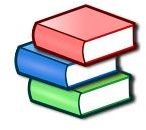Conducting a Genre Study for Grades 1-2: Information for Educators
Most classrooms make a concerted effort to expose children to a variety of literature throughout the course of the year. For this reason, one can easily extend the literature studies into an actual genre study. With young students, this is best accomplished by explaining different genres and their intended meanings, and then following up the information by providing excellent examples of age-appropriate literature for each. In this article, we will provide tips for conducting a genre study with young students in the classroom or even in a library setting.
Image credit https://commons.wikimedia.org/wiki/File:Nuvola_apps_bookcase.svg
How to Begin
The first step in the genre study should be making certain the students understand the difference between fiction and non-fiction. When working with young children, it is best to keep explanations as simple as possible. Here is a definition of each, taken from TheFreeDictionary.com, which may be offered to, and easily understood by, young children:
Fiction is a “literary work whose content is produced by the imagination and is not necessarily based on fact.”
Nonfiction (or Non-fiction) is “writing dealing with facts and events rather than imaginative narration.”
Once students have learned the definition of each, spend some time identifying whether the story they are reading (or listening to) is fiction or nonfiction. You may even wish to dedicate an entire bulletin board, or large wall space, to the lesson. Divide the area into two sections, with one labeled “Fiction,” and the other labeled “Nonfiction.” After you have read stories together in class, ask the students to identify correctly whether it was a piece of fiction or nonfiction. Students should use examples from the story to defend their answers. (For example. when reading The Three Little Pigs, a student might say they know this is fiction because pigs can not build houses.) Write the title of the book on a paper strip, and then have the students help you place the title under the correct heading. If possible, you may even wish to carefully pin the book’s book jacket up next to the title written on the paper strip. Providing this visual will further help the students remember the story.
After a few weeks, you will find that the children have gotten pretty good at identifying whether a story is fiction or nonfiction after a reading. Challenge them by next taking a look at only the title and images on the front cover a story. Have students make predictions as to whether they think the story will be one of fiction or nonfiction. After reading, confirm by citing examples from the story.
Time to Delve Deeper
Once you are certain that the children have a good understanding of fiction vs. nonfiction stories, you can delve deeper into your genre study with young students.
Explain to the class that fiction and nonfiction literature can be further divided into different categories or “types.” These are called genres. A genre is basically a certain kind or type of work–be it a book, music, art or even movie. Also explain that you will be spending time for the rest of the year exploring the different genres of fiction stories and genres of nonfiction works in literature:
Nonfiction
- Informational literature
- Biography
- Autobiography
Fiction
- Traditional literature
- Fantasy/Science Fiction
- Realistic Fiction
- Historical Fiction
- Poetry
Provide the names of the genres, and a brief explanation of what they might find in this type of story. For example, explain to the students that autobiographies are true stories that a person has written about themselves. In this type of story, you will expect the narrator (or person telling the story) to use the word “I” a lot. You will also hear about things that really did happen, and they will take place in locations which really do exist.
You can decide for yourself whether to present one genre at a time, and then provide multiple examples of books which would be placed in that category, or if you would rather take it one book at a time and simply identify the genre of the story you happen to be reading.
One suggestion is to create posters to hang around your room–each bearing the name of a different genre. Just as you kept track of titles which were fiction or nonfiction, you can keep track of stories which fall under each different genre. Write the title directly on the corresponding poster.
As you learn about new genres during the year, consider having book bins devoted to a particular genre available to the students. This way, if they would like to read more historical fiction books, or spend some time reading poetry, they can find examples in the corresponding book bin.
You can encourage students to try different genres by providing them with a sticker chart or even a genre passport. Here, they can keep track of the different genres they have tackled by receiving stickers or stamps in the corresponding genre section for each book read.
Finally, transfer what you have learned during your genre study into your writing curriculum, by asking students to begin thinking about what genre their written stories might fall under. You can even include student-published books into your genre book bins for free reading time.
